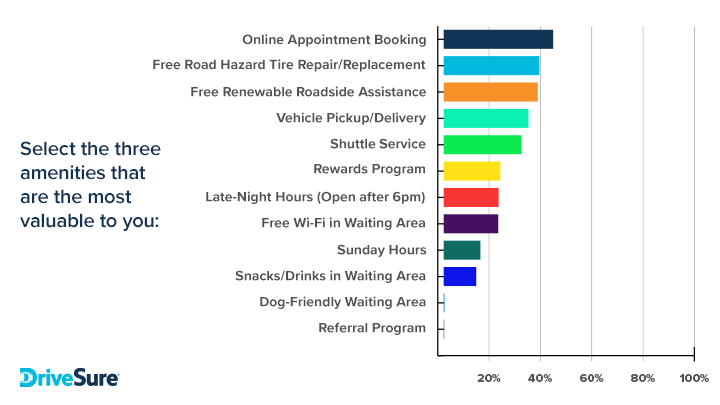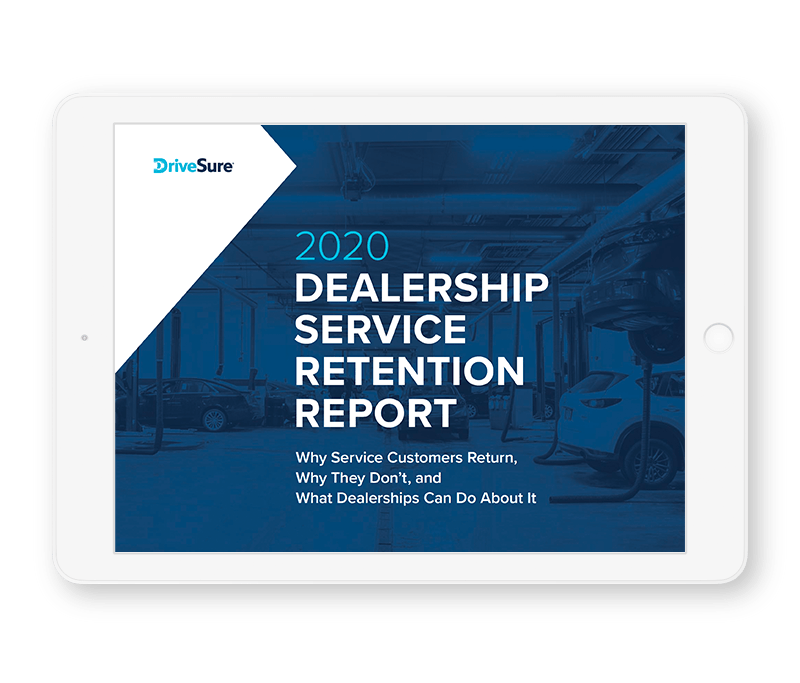This article was originally posted to DrivingSales.com
What can a service department offer that actually drives customers to return?
When I discuss this question with dealerships, the conversation often turns to the additional things they provide outside of their standard repair and maintenance services. Some believe that things like coffee and free Wi-Fi in the waiting area are encouraging customers to come back. Others are much more focused on things like loyalty programs.
But in both situations, I find that most dealerships lump these offerings into the same category: amenities. Dealerships would be much better served by thinking about these added perks as falling into one of two categories:
Amenities vs. Incentives
Though they may appear similar at surface level, there are some important differences between an amenity and an incentive. If you look at Oxford’s definitions, they start to become clear:
Amenity: a desirable or useful feature or facility of a building or place.
Incentive: a thing that motivates or encourages one to do something.
The way I like to think about it is that an amenity is something that makes a customer more comfortable while their vehicle is being serviced, while an incentive is something that actually pushes a customer to come back.
This is why it’s crucial for service departments to think of their perks in these two categories. By doing so, they can easily see if they’re falling short when it comes to providing the things that will actually grow their business.
Now don’t get me wrong, amenities are still necessary. But in today’s world, most true amenities are just table stakes. They’re expected by customers and they’re a major component of offering a good customer experience. But they’re unlikely to be the driving reason customers return.
Our 2020 Dealership Service Retention Report showed us just that. We asked dealership service customers which perks were most valuable to them and nearly all the top answers would fall into the incentive category.
Note: We called them ‘amenities’ in the survey question to avoid confusion because that’s how dealerships commonly refer to them.

How to Differentiate Between Amenities and Incentives
Now that the differences between amenities and incentives are clear, the first step is taking stock of what your dealership offers today to see where you may be lacking.
It’s not always black and white, but asking the following questions about each perk will help determine which category it fits in:
- Is it designed to offer comfort to the customer while their vehicle is being serviced?
Yes: Almost always an amenity
No: Likely an incentive
- Does it give the customer a form of banked currency (something they can use in the future)?
Yes: Almost always an incentive
No: Likely an amenity
- Do new customers expect it?
Yes: Likely an amenity
No: Likely an incentive
- Can you think of instances where a customer came in for service primarily because of this perk?
Yes: Likely an incentive
No: Likely an amenity
- Was it relatively inexpensive and easy to implement?
Yes: Likely an amenity
No: Likely an incentive
Where Common Perks Fall
So, with those questions to guide us, let’s see which category some of the more common dealership offerings fall:
Coffee & Wi-Fi: These clearly fall in the amenity category since they’re designed to offer comfort while a customer’s vehicle is being serviced.
Shuttles: While shuttles aren’t a waiting room feature, they’re still designed to offer comfort and convenience to the customer – making them amenities.
Online Appointment Scheduling: We’re starting to get in a bit of a gray area, but I consider online appointment scheduling to be an amenity (and a valuable one at that). These days, it’s easy to implement, expected by customers, and exists to provide a little added convenience.
Vehicle Pick-Up & Delivery: Out of all the perks on our list, this is the one where you could make a strong argument for either category. Its primary purpose is to offer comfort and convenience and it doesn’t provide banked currency, but it is unexpected, somewhat difficult to implement, and could be a driving factor behind a customer coming in for service. Ultimately, I like to consider pick-up and delivery an incentive, but my mind may change as more dealerships begin to offer it.
Loyalty Programs & Punch Card Programs: These are clearly incentives as they provide the customer with a form of banked currency and are designed to get customers to return to use their rewards. However, the effectiveness of these programs is debatable, especially when you look at the results from our Dealership Service Retention Report.
DriveSure: Our suite of renewable benefits (which includes roadside assistance, road hazard tire protection, and rental coverage, the duration of which is matched to your recommended return interval) fall into the incentive category because they provide a ‘banked currency’ in the form of services customers can use for free for a specific amount of time after returning to the dealership. Since customers have to return for regular maintenance to renew the benefits, DriveSure has often been a primary reason that customers return. And, if you look at the benefits most valued by dealership customers in our Retention Report, there’s no question that customers love this unexpected perk.
So how do your perks stack up? Are you offering enough incentives or are you relying too heavily on amenities?
For more information about how to get more service customers to return more often, be sure to grab a free copy of our full 2020 Dealership Service Retention Report here.
The 2020 Dealership Service Retention Report
INSIGHTS FROM NEARLY 2,000 DEALERSHIP CUSTOMERS
Learn why customers choose to return to their dealership for service and why they don’t. Plus, we reveal your biggest opportunities for encouraging customer loyalty.


